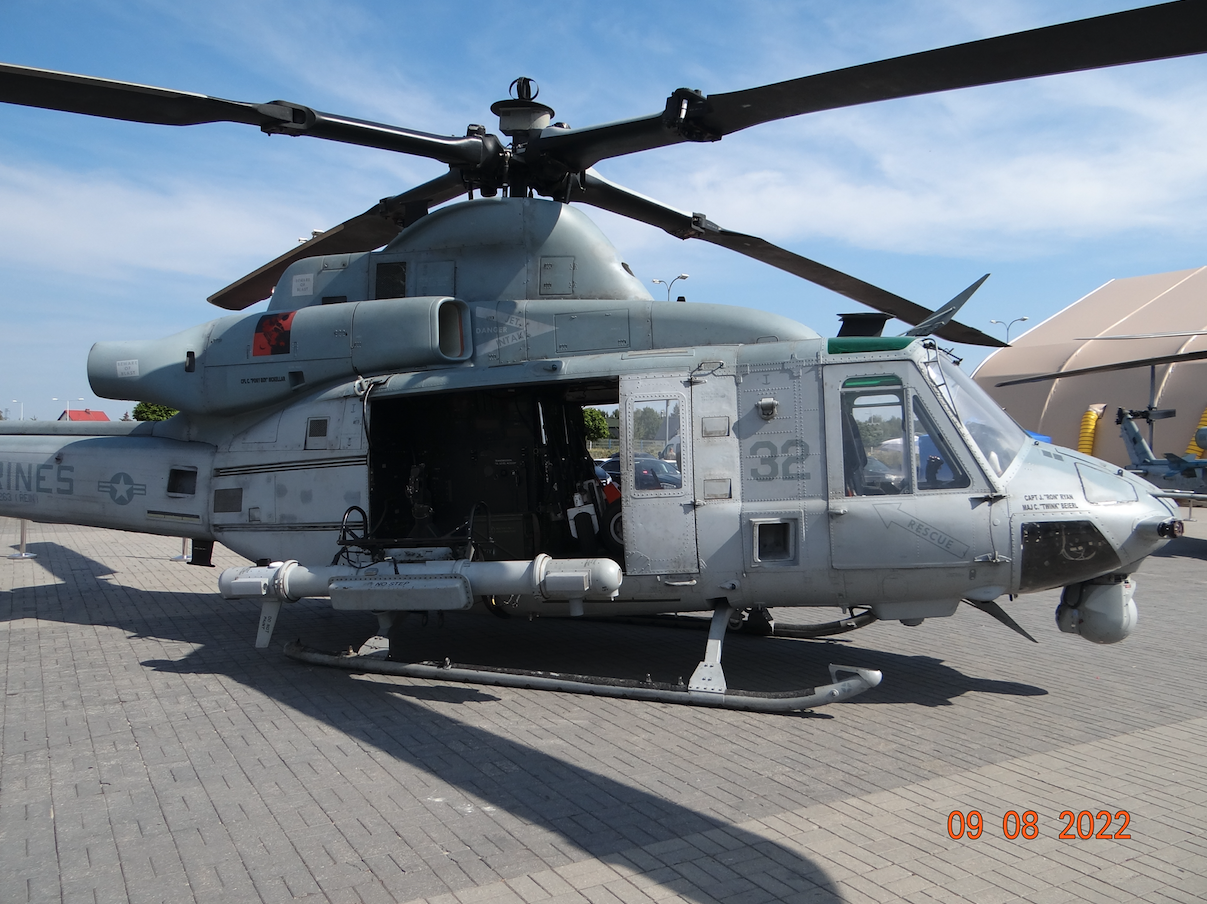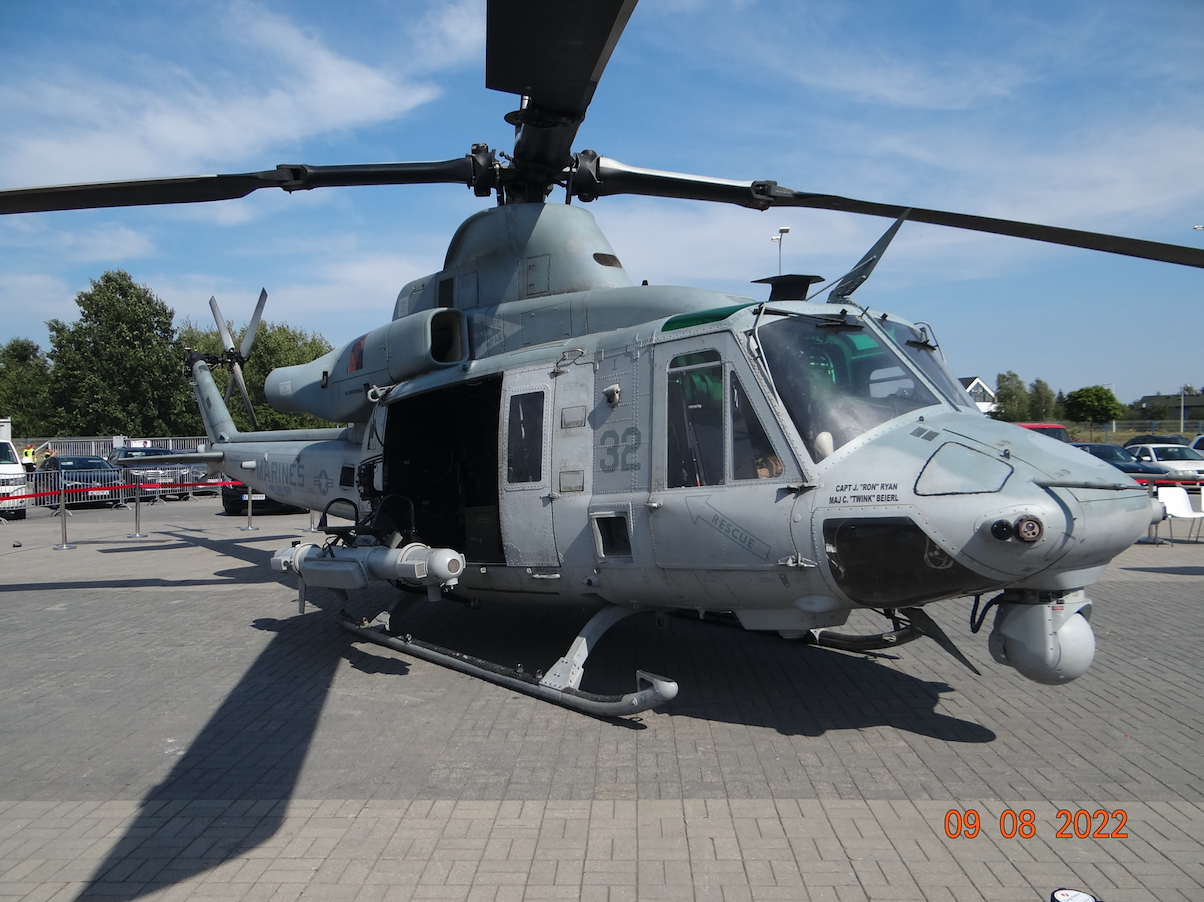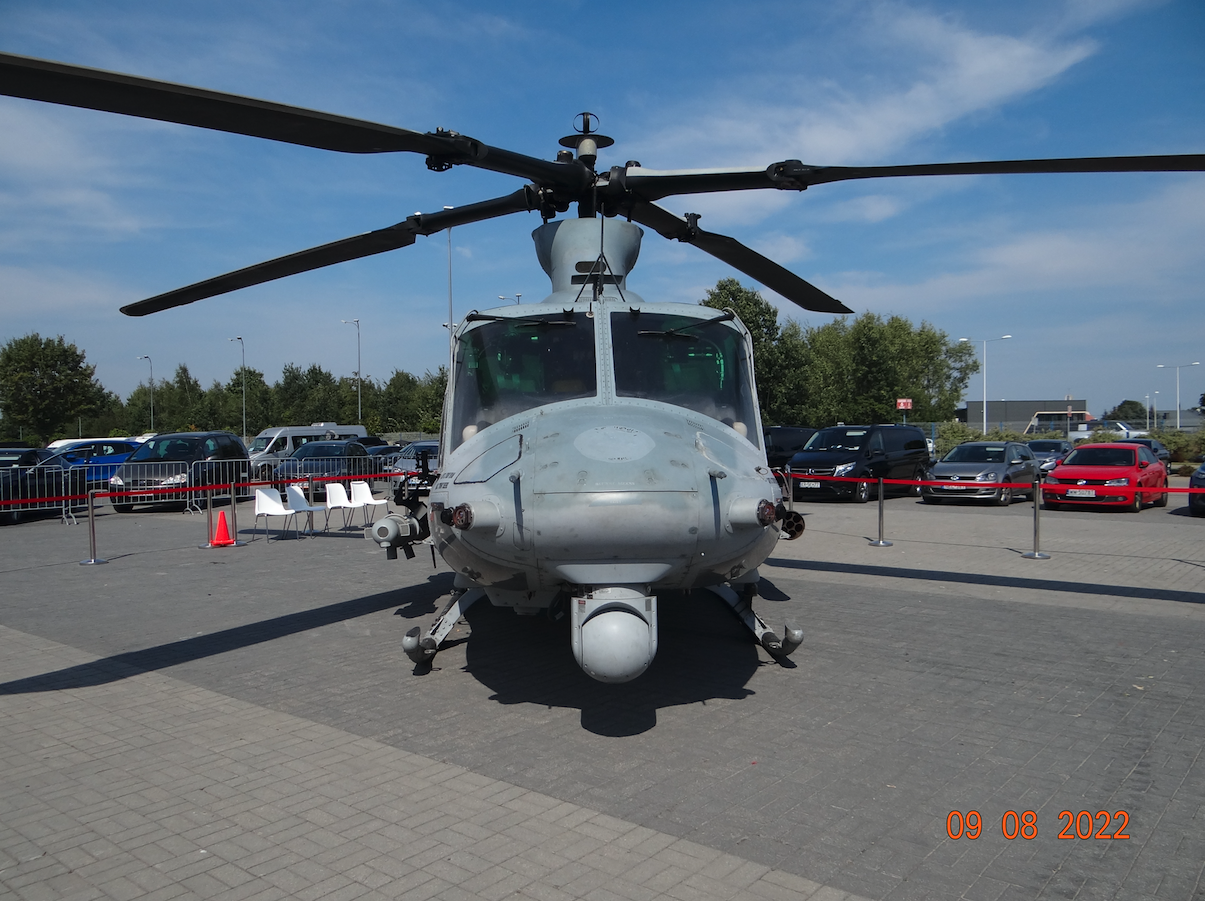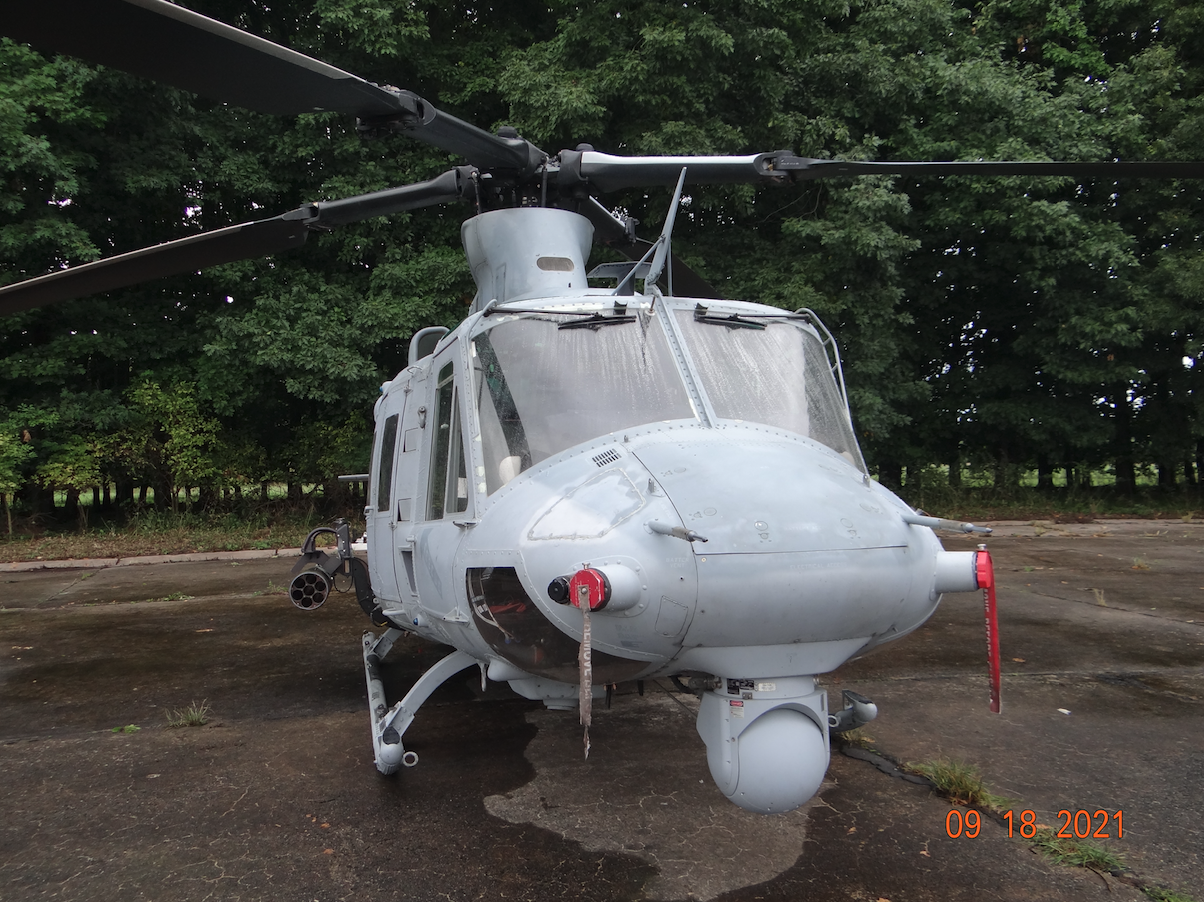Kraków 2022-09-14
Bell UH-1 Y Venom multi-role military helicopter.
The Bell UH-1 Y Venom is another incarnation of the legendary Huey helicopter that performed so well during the Vietnam War. Among American soldiers, Bell UH-1 Y Venom is called Super Huey. Not without reason, because it is the same family. The helicopter is also called "Yankee", based on the pronunciation of its variant of the letter of the NATO phonetic alphabet.
The Bell UH-1 Y Venom is a twin-engine, medium-sized, multi-role helicopter, built by Bell Helicopter as part of the US Marine Corps H-1 Modernization Program. The helicopter made its first flight on December 20, 2001, a year after the first flight of the Bell AH-1 Z Viper attack helicopter, with which it has a lot in common.
The Bell AH-1 Z Viper and Bell UH-1 Y Venom helicopters have many common elements, which reduces production and operating costs. Both helicopters share the tail boom, engines, rotor system, control, avionics, software and maintenance. A total of 84% of the components of both helicopters are identical.
It has long been considered whether the Bell UH-1 Y Venom helicopter should be introduced to the USMC. In 2005, it was decided to go into series production with the new helicopter to replace the aging USMC fleet of the UH-1N Twin Huey multi-role light multirole helicopters, first introduced in the early 1970s. Deliveries of Bell UH-1 Y Venom helicopters to the USMC continued between 2008 and 2018.
160 were built and the helicopter is still manufactured for foreign buyers. Over the years, the helicopter was modernized. New avionics and radio stations were installed, as well as modern machine guns mounted in the side windows. Mounted: opto-electronic head, infrared system, glass cockpit. Despite the increased weight, the helicopter increased the maximum speed to 300 km / h. The efficiency of the engines was increased.
Compared to the older Huey helicopters, the two-bladed rotor has been replaced with a four-bladed one. New main rotor blades were used, completely made of composites. The rotor blade withstands a hit by a 23 mm caliber bullet. The tail rotor has changed, which in the new helicopter is four-bladed and made of composite. Previously, it was two-bladed.
In order to increase the capacity of the hold, the helicopter hull was extended by 21 inches (0.530 m). The segment was placed in front of the main cargo bay door. Compared to the UH-1 N (tested in 1969), the UH-1 Y has an increased payload, 50% greater range, less vibration and a higher cruising speed.
On October 11, 2017, the Agency for Defense Cooperation and Security notified the United States Congress that 12 UH-1 Y Venom units were sold for $ 575 million. In December 2019, an order was approved for 8 Bell UH-1 Y Venom helicopters for the Czech Republic – Vzdušné Síly Armády České Republiky, together with 4 Bell AH-1 Z Viper helicopters. In July 2021, Bell announced that the first UH-1 Y Venom helicopter for the Czech Republic was on the assembly line.
Currently (2022), the Polish Armed Forces are considering the purchase of Bell AH-1 Z Viper combat helicopters and Bell UH-1 Y Venom multi-role helicopters.
Bell UH-1 Y Venom Motors:
The helicopter is powered by two General Electric T700-GE-401C turboshaft engines, with a power of 2 x 1,828 shp (2 x 1,363 kW).
Data T-T Bell UH-1 Y Venom:
A crew of 2 pilots, 10 armed soldiers. Length 58 ft 4 in (17.78 m). Height 14 ft 7 in (4.45 m). Curb weight 11.840 lb (5.371 kg). Gross weight is 18,500 lb (8,391 kg). Main rotor diameter 48 ft 10 in (14.88 m). Maximum speed of 164 kn (189 mph, 304 km / h). Cruising speed of 158 kn (182 mph, 293 km / h). Combat range of 130 nm (150 mi, 240 km). Flight time 3 hours 18 minutes. 20,000 ft (6,100 m) service ceiling. Rate of climb 2,520 ft / min (12.8 m / s).
Written by Karol Placha Hetman




